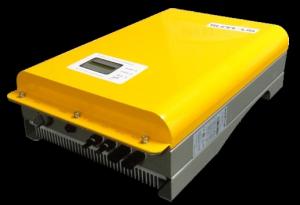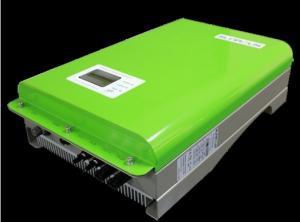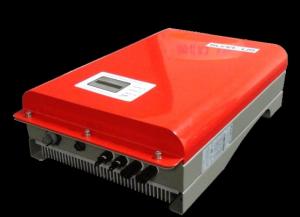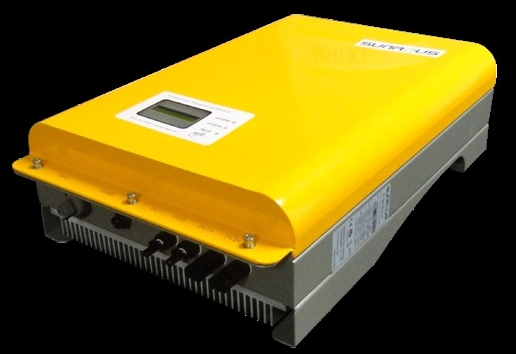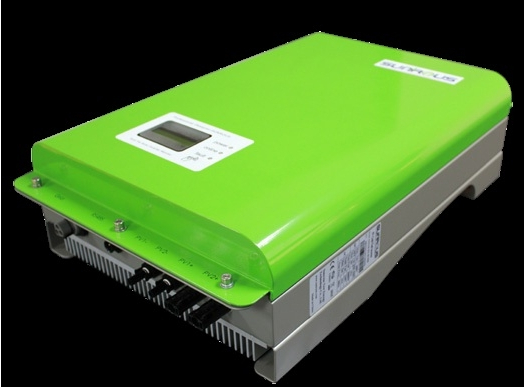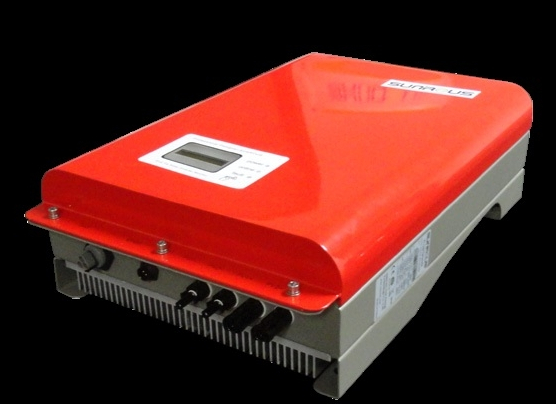Freesun Solar PV Grid-Tied Inverter for High Quality Solar System
- Loading Port:
- Shanghai
- Payment Terms:
- TT or LC
- Min Order Qty:
- 20 mm
- Supply Capability:
- 1000 mm/month
OKorder Service Pledge
OKorder Financial Service
You Might Also Like
PV Grid-Tied Inverter for Syolar System High Quality
5years warranty
·Sealing stainless steel shell, suitable for indoor or outdoor installation
·Using industrial frequency transformer in isolation,ensure system safety and reliability
·The highest efficiency achieves 94. 8% have satisfactory cosmetic
·Adopt connectors type cable connection, easy operation and installation
·With multiple independent MPPT channel function to ensure maximum photovoltaic system
capacity
·Has the active and passive double prevent island function
·Working temperature range - 25 to 50 ℃
LF series 2.0kw — 2.8kw
Features: Double channel input, and their respective independent of the MPPT function, make photovoltaic array installation is more fexible.

| GT2.0-ZX-01/LF | GT2.8-ZX-01/LF | |
|---|---|---|
| Input(DC) | ||
| Max.DC Power | 2350W | 3270W |
| Rated input voltage | 280V | 280V |
| PV Voltage range, MPP | 150V ~ 400V | 150V ~ 400V |
| Max.DC Voltage | 6+6A | 10+10 A |
| Number of MPP trackers | 2 | 2 |
| Number of strings (parallel) | 2 | 2 |
| Output(AC) | ||
| Nominal AC /max AC power | 2000W / 2200W | 2800W / 3080W |
| Max.output current | 10.0A | 15.0A |
| Nominal AC Voltage | 120V/220/ 230/240V | 120V/220/ 230/240V |
| AC range | -15+10%(Vrms) adjustable | -15+10%(Vrms) adjustable |
| AC grid frequency/range | 50/60/±0.5Hz adjustable | 50/60/±0.5Hz adjustable |
| Power factor | >0.99 | >0.99 |
| THD | <4% | <4% |
| AC connection | Single-phase | Single-phase |
| effciency | ||
| Max.effciency/Euro-ETA | >94.5% / >93.0% | >94.5% / >93.0% |
| Protection devices | √ | √ |
| DC reverse polarity protection | √ | √ |
| AC short-circuit protection | √ | √ |
| Ground fault monitoring | √ | √ |
| Grid monitoring | √ | √ |
| Output Transient Voltage Suppression | √ | √ |
| General data | ||
| Dimensions (W/ H / D) in mm | 350 / 530 / 146 mm | 350 / 530 / 146 mm |
| Weight (Kg) | 36.5 | 42.5 |
| Operating temperature range | -25 ~ +50 | -25 ~ +50 |
| Storage temperature range | -40 ~ +70 | -40 ~ +70 |
| Ambient humidity | 0 ~ 95% | 0 ~ 95% |
| Consumption (night) | <0.5W | <0.5W |
| Topology | HF-transformer | HF-transformer |
| Cooling concept | Convection | Convection |
| Enclosure type | IP65 | IP65 |
| Features | ||
| DC connection: PV special connector | √ | √ |
| AC connection: connector | √ | √ |
| LCD display & Backlit | √ | √ |
| LED display | √ | √ |
| Interfaces: RS485 | √ | √ |
| Warranty: 10years | √ | √ |
| Certifcates & approvals | UL1741/ IEEE1547/ VDE0126-1-1/ AS4777/ DK5940 | UL1741/ IEEE1547/ VDE0126-1-1/ AS4777/ DK5940 |
| Electromagnetic compatibility | IEC62103/ EN50178/ EN61000-6-1/2/3 | IEC62103/ EN50178/ EN61000-6-1/2/3 |
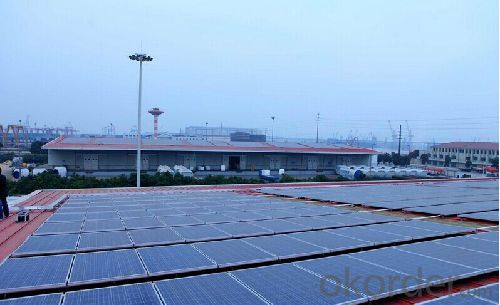
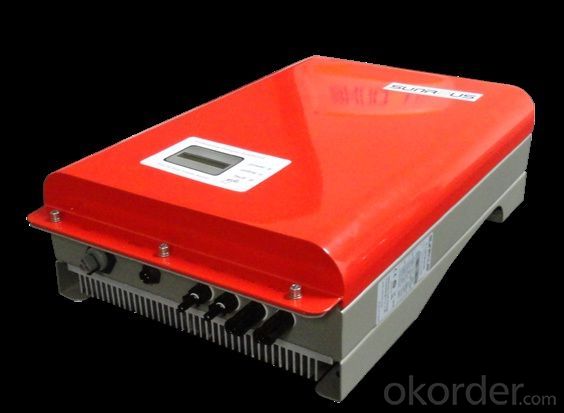
- Q: Can a solar inverter be connected to the grid?
- Yes, a solar inverter can be connected to the grid. In fact, this is one of the main purposes of a solar inverter – to convert the direct current (DC) electricity generated by solar panels into alternating current (AC) electricity that can be used in homes and businesses or fed back into the grid. Connecting a solar inverter to the grid allows for the utilization of solar energy while also providing the opportunity to sell excess power back to the grid, contributing to renewable energy generation and potentially offsetting electricity costs.
- Q: Can I connect solar panels directly to the grid without an inverter?
- No, you cannot connect solar panels directly to the grid without an inverter. An inverter is necessary to convert the DC (direct current) output from solar panels into AC (alternating current) that is compatible with the grid.
- Q: How does a solar inverter handle voltage sags or swells in the grid?
- A solar inverter handles voltage sags or swells in the grid by continuously monitoring the voltage levels. When it detects a sag or swell, it adjusts its internal circuitry to regulate the output voltage accordingly. This ensures that the connected solar panels continue to operate within their optimal voltage range, minimizing any negative impact on the overall power generation system.
- Q: Can a solar inverter be used with different types of tracking systems?
- Yes, a solar inverter can be used with different types of tracking systems. The function of a solar inverter is to convert the DC (direct current) generated by the solar panels into AC (alternating current) that can be used to power electrical devices. As long as the tracking system is capable of generating DC power from the solar panels, the solar inverter can be used to convert it into usable AC power.
- Q: How does a solar inverter handle voltage and frequency variations caused by load shedding?
- A solar inverter handles voltage and frequency variations caused by load shedding by constantly monitoring the grid conditions. When it detects a drop in voltage or frequency, it adjusts its output parameters accordingly to maintain a stable supply of electricity to the connected loads. This ensures that the devices receiving power from the solar inverter are not affected by the fluctuations in the grid caused by load shedding.
- Q: What are the safety features in a solar inverter?
- Some of the safety features in a solar inverter include over-voltage protection, under-voltage protection, over-current protection, short-circuit protection, and ground-fault protection. Additionally, many modern inverters also have built-in monitoring systems that can detect and alert users to any potential issues or malfunctions.
- Q: What is the lifespan of the warranty on a solar inverter?
- The lifespan of a warranty on a solar inverter can vary depending on the manufacturer and model. Generally, most warranties for solar inverters range from 5 to 10 years.
- Q: What is the role of voltage support in a solar inverter?
- The role of voltage support in a solar inverter is to regulate and stabilize the voltage levels within the solar power system. It ensures that the voltage output from the solar panels matches the voltage requirements of the connected devices or the grid. By maintaining a consistent voltage, it helps to prevent overvoltage or undervoltage situations, which could damage the equipment or disrupt the power supply. Voltage support also helps to enhance the overall efficiency and reliability of the solar power system.
- Q: Can a solar inverter be used in systems with multiple inverters?
- Yes, a solar inverter can be used in systems with multiple inverters. In fact, using multiple inverters in a solar system is quite common, especially in larger installations. Multiple inverters allow for better power distribution and efficiency, as well as redundancy in case of any failures. These inverters can be connected in parallel or in series depending on the specific system requirements and design.
- Q: Can a solar inverter be used with electric vehicles?
- No, a solar inverter cannot directly be used with electric vehicles. Solar inverters are designed to convert DC (direct current) from solar panels into AC (alternating current) for home or grid use. Electric vehicles, on the other hand, require DC power to charge their batteries. However, solar energy generated through a solar inverter can be used to charge the batteries of an electric vehicle indirectly by connecting the solar system to the power grid or using a separate charging station equipped with a suitable DC charger.
Send your message to us
Freesun Solar PV Grid-Tied Inverter for High Quality Solar System
- Loading Port:
- Shanghai
- Payment Terms:
- TT or LC
- Min Order Qty:
- 20 mm
- Supply Capability:
- 1000 mm/month
OKorder Service Pledge
OKorder Financial Service
Similar products
Hot products
Hot Searches
Related keywords
